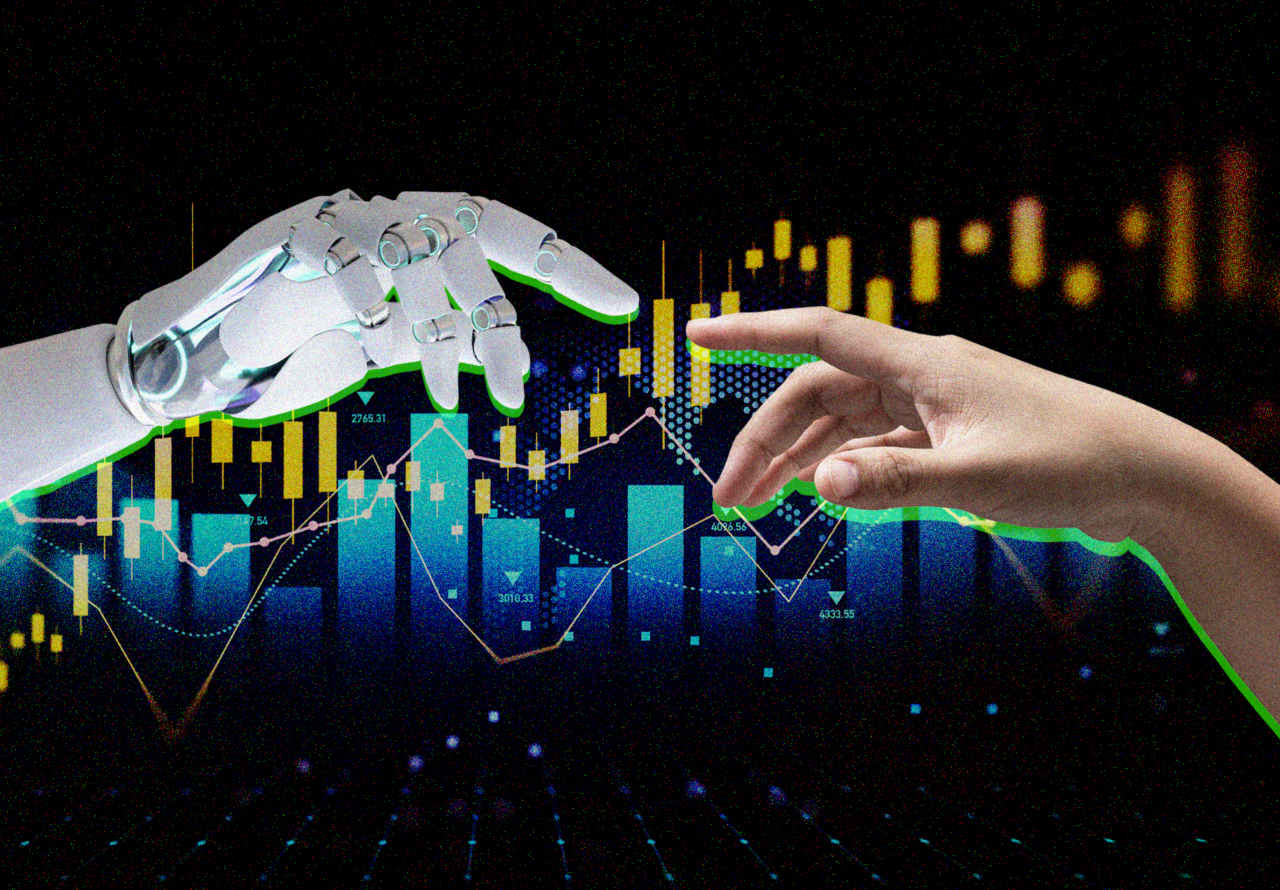AI is no longer a buzzword—it’s the powerhouse driving trillions in market value. But as 2025 unfolds, savvy investors must navigate this boom or risk getting left behind in a tech-driven economy.
With AI stocks like NVIDIA and Microsoft leading the charge, the opportunity for massive gains is real, yet so are the pitfalls of overvaluation and market volatility.
The AI Boom: From Hype to High Stakes in 2025
The AI investment landscape exploded in 2023-2024, fueled by breakthroughs like ChatGPT and massive data center builds. By mid-2025, the global AI market is projected to reach $680 billion, with software and infrastructure stocks at the forefront. But 2025 marks a shift: The initial hardware frenzy (chips and servers) gives way to software and applications, where real-world AI deployment will separate winners from losers.
Hardware giants like NVIDIA (up 57% YTD) and Broadcom continue to dominate, but software plays like Palantir and Snowflake are emerging as must-haves. The Magnificent Seven—Meta, Apple, Amazon, Alphabet, Tesla, Microsoft, and NVIDIA—still command 30% of the S&P 500, but diversification into niche AI sectors like cybersecurity (CrowdStrike) and databases (MongoDB) is key to portfolio resilience.
Volatility hit hard in early 2025, with AI stocks dipping amid economic uncertainty, but rebounds followed strong earnings from cloud providers like Azure (up 33% YoY) and Google Cloud (up 32%). Investors who timed entries during dips saw 20-30% gains, proving AI’s long-term potential amid short-term swings.
Top AI Stocks to Watch: Hardware, Software, and Beyond
To win in 2025, focus on a balanced AI portfolio spanning infrastructure, platforms, and applications.
- Hardware Leaders: NVIDIA ($NVDA) remains the gold standard, with its Blackwell chips ramping up for Q4 demand. Broadcom ($AVGO) surges with custom AI chips for hyperscalers like OpenAI, projecting $16B in AI revenue. Taiwan Semiconductor ($TSM) manufactures 92% of advanced AI chips, making it indispensable despite geopolitical risks.
- Software and Cloud Giants: Microsoft ($MSFT) leads with Azure’s 33% growth, integrating AI into Office and GitHub. Alphabet ($GOOGL) follows at 32% for Google Cloud, emphasizing AI agents and search enhancements. Snowflake ($SNOW) excels as the data platform for enterprise AI, while MongoDB ($MDB) powers AI-native databases.
- Emerging Plays: Tesla ($TSLA) dominates real-world AI with robotaxis, Palantir ($PLTR) leads enterprise AI deployment, and CrowdStrike ($CRWD) secures AI systems amid rising cyber threats. Niche picks like Tempus ($TEM) revolutionize AI in healthcare, and GitLab ($GTLB) manages AI source code.
Diversify across these: 40% hardware, 30% cloud/software, 30% specialized AI for balanced exposure.
Expert Opinions: Optimism Tempered by Warnings
Experts are bullish but cautious. Wedbush’s Dan Ives predicts AI spending will hit $1 trillion by 2027, with software leading 2025 growth. Goldman Sachs CIO Marco Argenti forecasts “expert AI” models for specialized fields like medicine and finance, creating new investment niches.
Yet, warnings abound. PwC notes AI governance must mature in 2025 to avoid risks, with leaders no longer able to ignore inconsistent practices. Erik Brynjolfsson of Stanford cautions AI could widen wealth gaps and eliminate entry-level jobs faster than economies adapt. A Pew survey shows AI experts are more optimistic than the public about job creation, but both groups demand more personal control over AI.
Public reactions on X echo this mix: Users like @StockSavvyShay highlight software winners like $PLTR and $TSLA, while @EndGameMacro warns of a dot-com-like bubble, with AI stocks overconcentrated in the S&P 500. Threads discuss quantum AI stocks like $IONQ for 2025 gains, blending hype with caution.
How the AI Trade Affects U.S. Readers: Economy, Jobs, and Daily Life
For everyday Americans, the AI trade is a double-edged sword. Economically, it fuels stock market highs—the S&P 500’s 11% Q2 2025 growth was 60% from AI stocks—but concentration risks crashes if hype fades. AI investments could add $7 trillion to U.S. GDP by 2030, but wealth gaps widen as tech elites benefit most.
Job markets face disruption: Blue-collar roles may fare better short-term, but white-collar entry-level positions could vanish, per workforce experts. Lifestyle shifts include AI tools for smarter homes (e.g., Apple Intelligence) and personalized health, but privacy concerns loom.
Politically, AI regulation debates heat up—89% of economists urge government AI infrastructure investment. In tech, innovations like hybrid workers and robotics promise efficiency but job losses. Sports? AI analytics revolutionize NFL strategies, boosting fantasy leagues.
Conclusion: Position Your Portfolio for AI’s 2025 Pivot
The AI trade in 2025 could supercharge portfolios with stocks like $NVDA, $MSFT, and $PLTR, but overreliance risks busts amid bubbles and job shifts. Diversify into software and emerging AI, heed expert calls for governance, and monitor regulations for a winning edge.
As AI evolves from infrastructure to expert models, proactive investors stand to gain—stay informed, balance risks, and let data guide your moves for long-term success.
